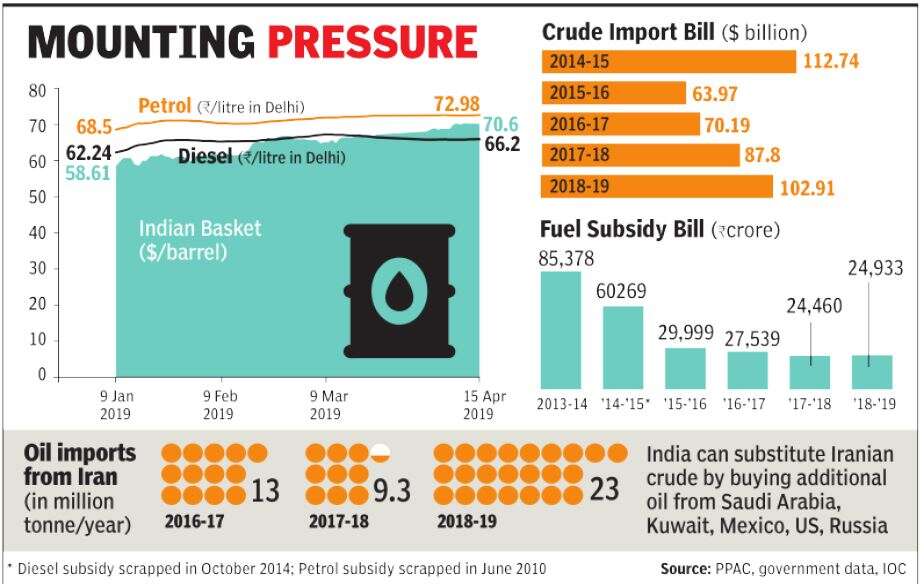WASHINGTON: The Trump administration on Monday put India in a tight energy fix and strategic tangle, ending the waiver that allowed New Delhi to buy Iranian oil even as it whittled down supplies from Tehran, a long-term source and partner in the region.
“The current waivers expire on May 2. There are no SRE (significant reduction exemption) waivers that extend beyond May 2. Full stop,” US Secretary of State Mike Pompeo announced at a state department briefing on Monday, signalling an end to a nearly year-long breathing room the Trump administration had given to eight countries, including India and China, after putting them on notice to stop buying Iranian oil.
“Any action or entity interacting with Iran should do its due diligence and err on the side of caution,” Pompeo warned, adding, “We will no longer grant exemptions. We’re going to zero. We’re going to zero across the board.”
Entities that continue to trade with Iran will invite US sanctions. Other countries that also lost the waiver in the face of the Trump administration’s unremitting hostility towards Iran are all American allies — Japan, South Korea, Italy, Greece, Turkey and Taiwan. The US action will make life harder for consumers in India by pushing up fuel prices and squeezing the new government’s leg room for social spending.
Government officials said they were “studying the implications of the announcement and the government will make a statement at an appropriate time”. India depends on imports for 82% of its oil needs and Iran is among its top-five suppliers. But top ranking executives of state-run oil companies, the main importers of Iranian oil, told TOI there was no concern over supply shortage as alternate sources have been identified.
They said Indian refiners have lined up ‘optional volumes’ — quantities in addition to term contract volumes – from Saudi Arabia, Kuwait, Mexico and the US to substitute shipments from Iran, which supplied over 23 million tonnes in 2018-19. It is on the pricing side that India will feel the impact. Global benchmark Brent crude spiked nearly 3% to $74/barrel on Monday, the highest since November 2018. Reports suggest the latest US move will suck out nearly 1 million barrels a day from the global market and help crude firm up further.
This is not good news for consumers and policy makers. Consumers have been gradually paying more for petrol and diesel —currently at Rs 70-plus level — since oil prices started hardening around January as production in Venezuela and Libya faltered in addition to the output cut by OPEC and Russia.
Continued high oil price will upset the government math by pushing up India’s oil import and subsidy bills. This will put pressure on the current account deficit and the rupee, which, in turn, will bring back inflationary pressure and prompt RBI to press the pause button on interest rate cut.

Falling oil prices since 2014 had improved these macroeconomic indicators by helping India save billions of dollars in oil import and subsidy bills. This allowed the Narendra Modi government to announce big-ticket social welfare programmes.
Although India has gradually weaned itself from Iranian oil after the Trump administration, under pressure from Israel and its friends in the US, began exerting pressure soon after the change of regime in the White House, Tehran still remains a major oil source accounting for nearly 10% of India’s imports. Moreover, New Delhi is strategically tied with Tehran with its investment in Iran’s Chabahar port that provides a lifeline to landlocked Afghanistan by circumventing Pakistan.
But all those considerations seem irrelevant to the Trump White House seized with deep antipathy towards Iran and its Shia regime that it accuses of bankrolling in West Asia, much of it aimed at Israel. Some of the pathology also stems from domestic politics given President Trump’s aversion to any initiative by the previous Obama administration, which reached a nuclear deal with Iran.
In Video: